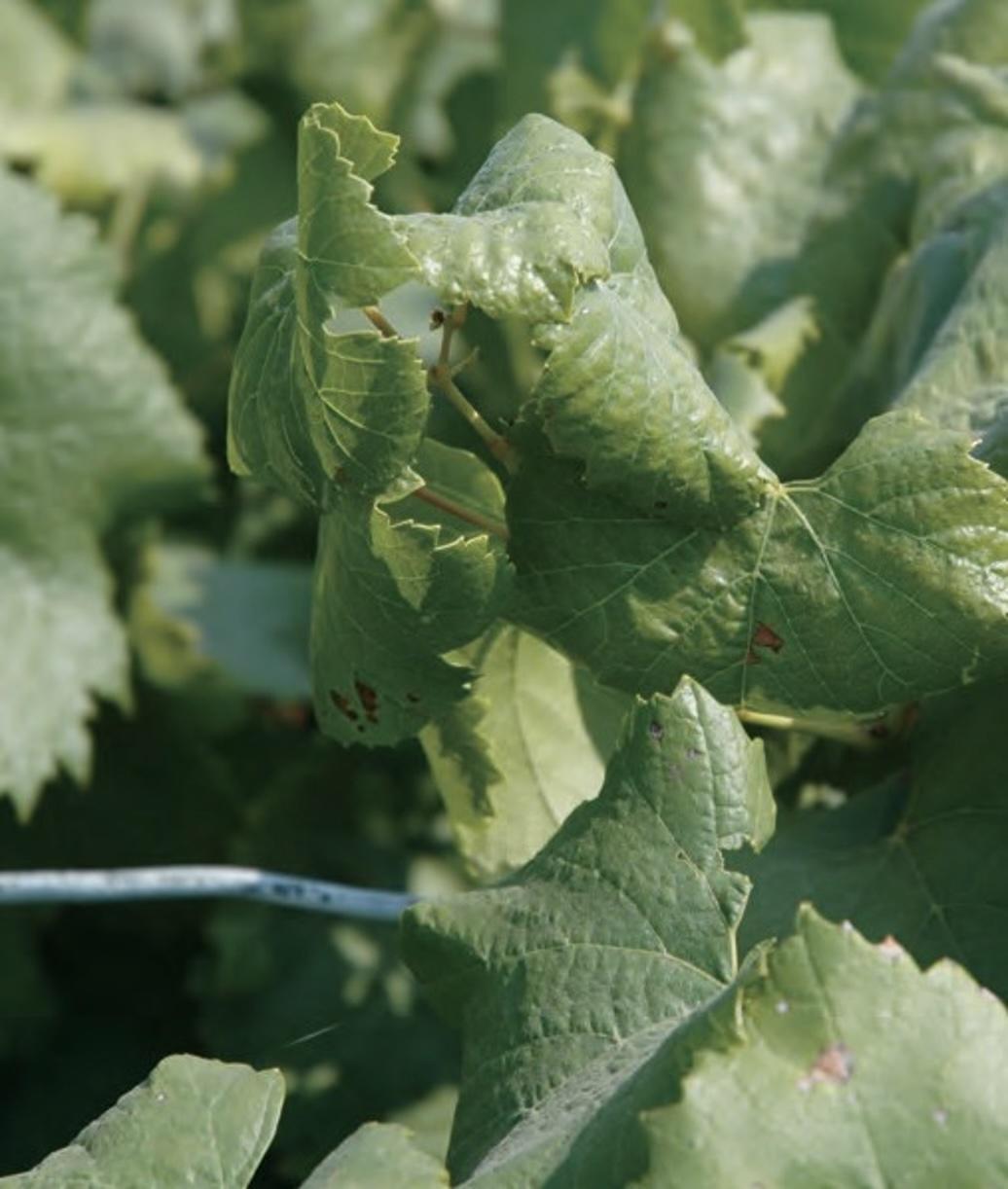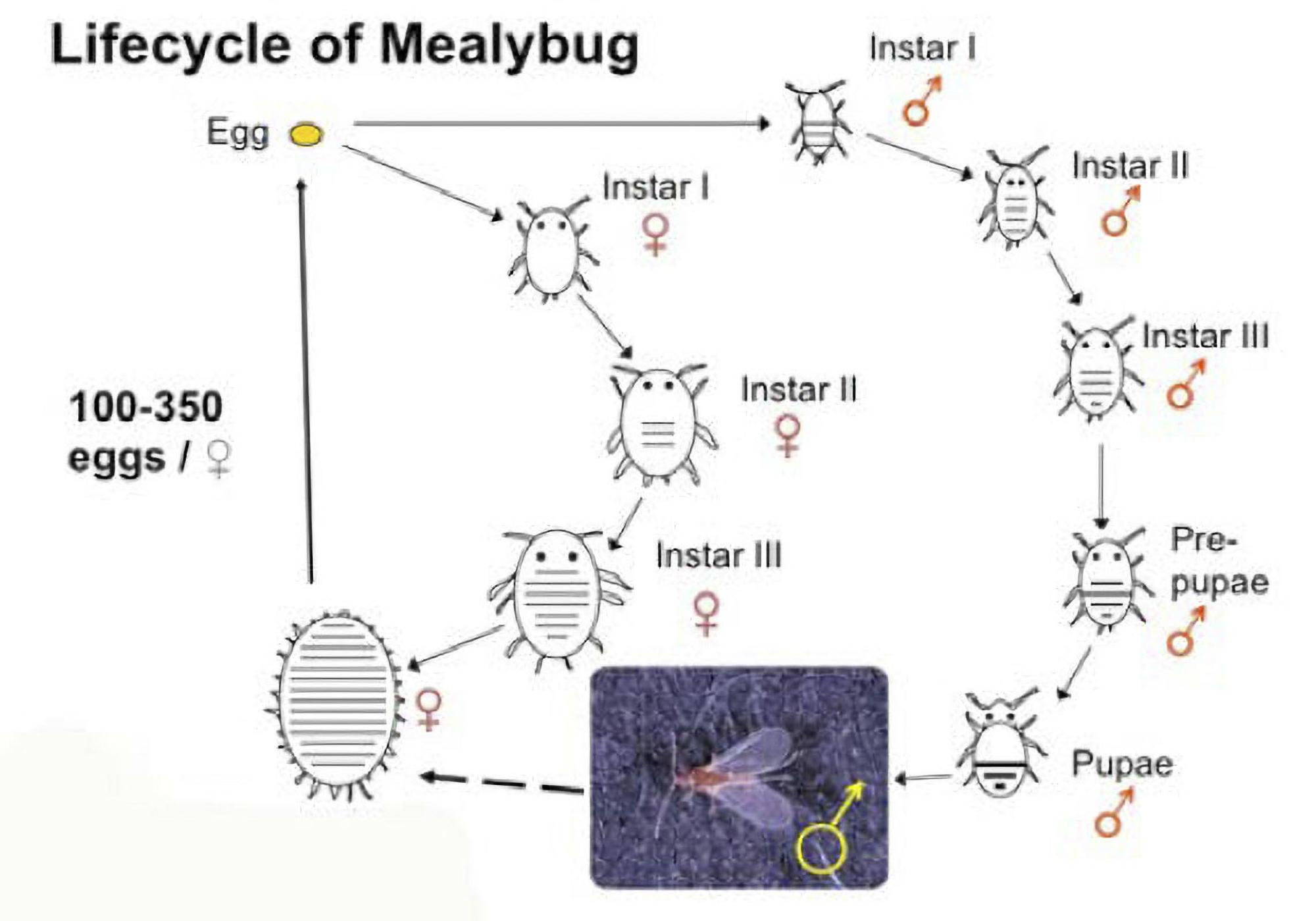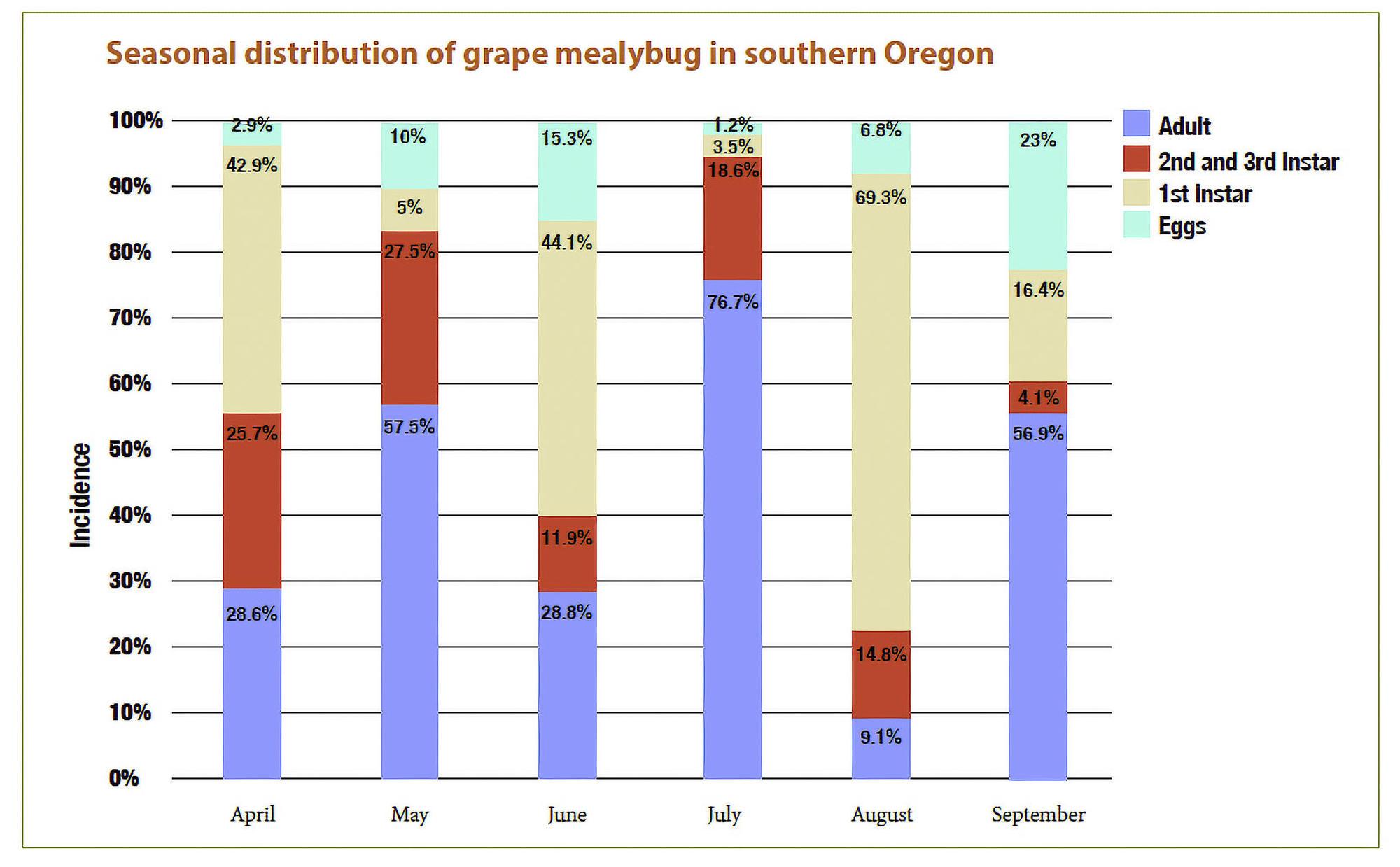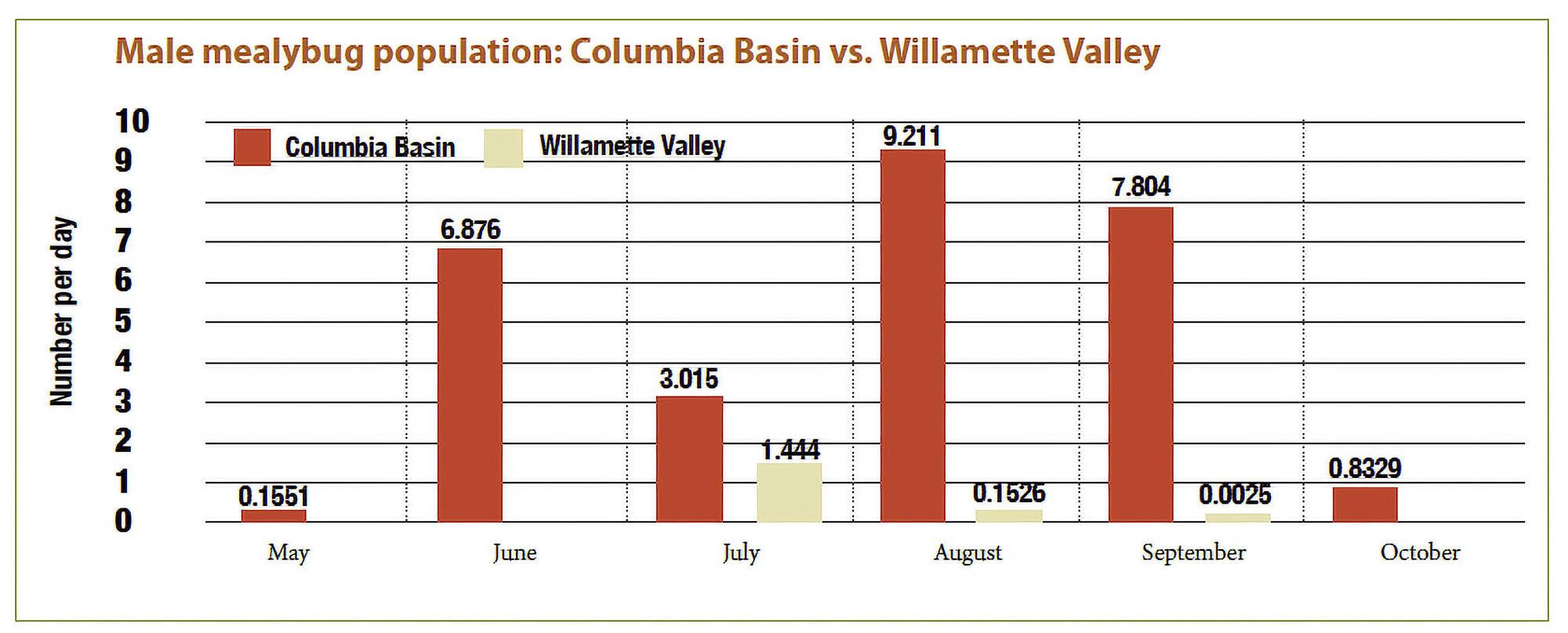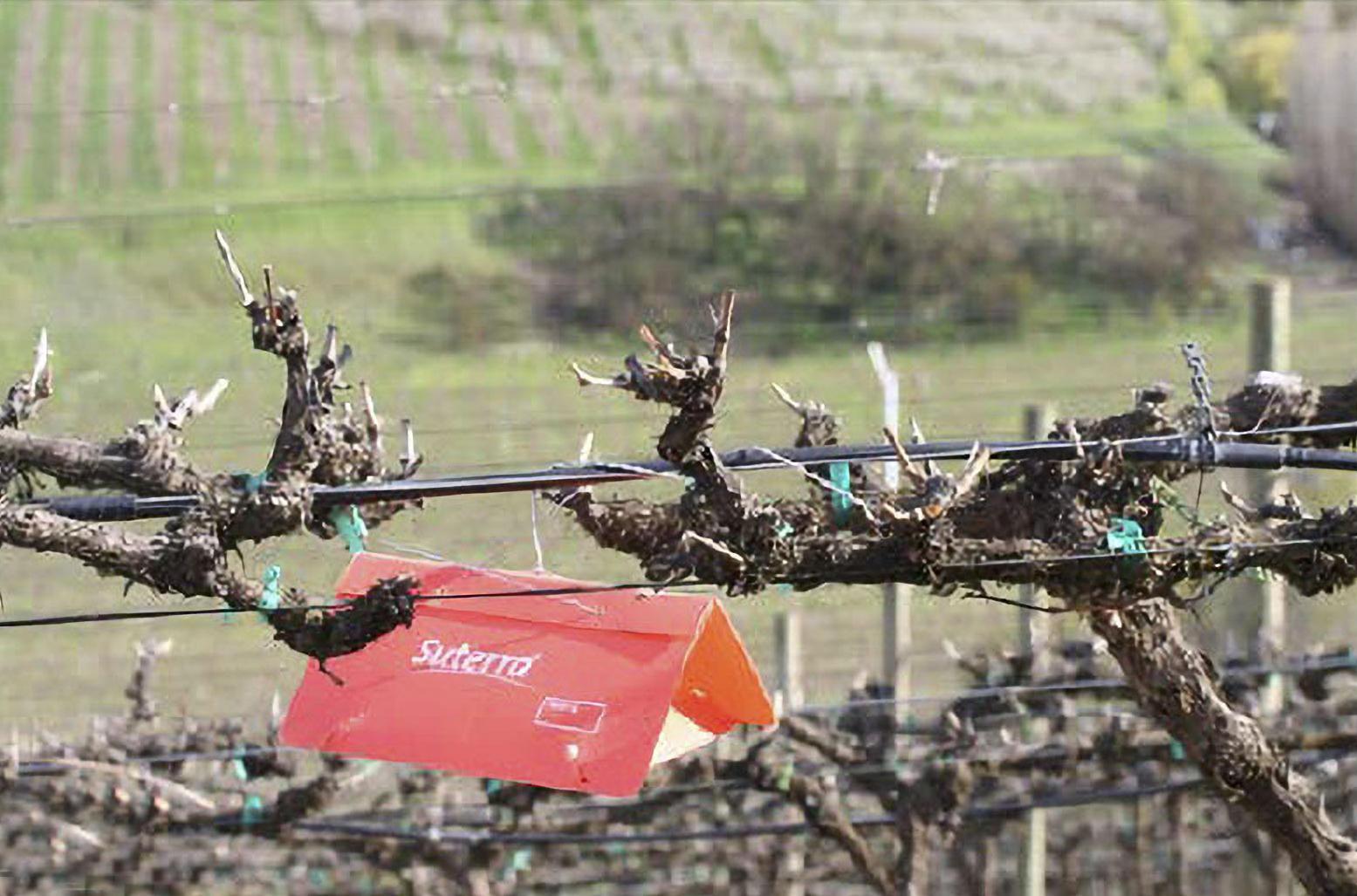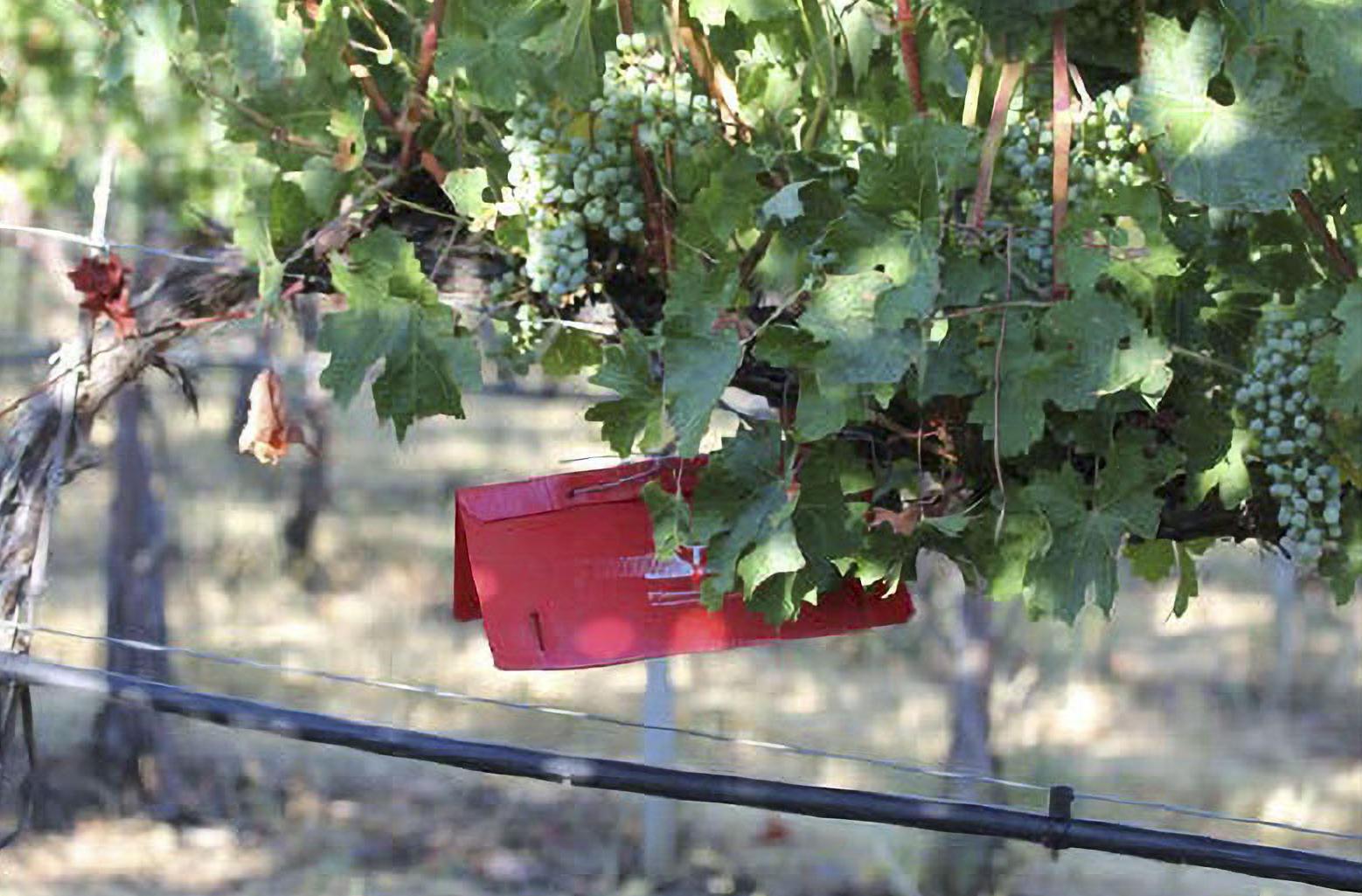Western Oregon typically produces cool-season wine-grape varieties. In warmer areas, such as parts of Southern Oregon and the eastern side of the state, Bordeaux varietals are common. In some years, a primary concern for growers is insufficient accumulation of heat units required to ripen grapes at the end of the growing season.
Mealybugs in Pacific Northwest vineyards sometimes infest grape clusters, touching the trunk, reducing fruit quality and, in some cases, rendering them unmarketable. More importantly, the grape mealybug, Pseudococcus maritimus, spreads the viruses that cause grapevine leafroll disease. You may see this referred to as GLRaV in more technical literature. Grapevine leafroll disease delays fruit ripening, exacerbating the cool-season climate conditions during the ripening phase. Managing mealybug populations can limit the spread of leafroll.
Scale insect species — including grape mealybug, P. maritimus; obscure mealybug, P. viburni; longtailed mealybug, P. longispinus; vine mealybug, Planococcus ficus; and lecanium scale, Parthenolecanium corni — spread leafroll virus. These species are all found in Oregon. Vine mealybug’s presence in the western United States has been detrimental due to its ability to produce multiple generations per season, its rapid dispersal, and its enhanced ability to spread grapevine leafroll disease.
Life stages of the mealybug
Mealybugs take their name from the appearance of their cottony ovisac, the protective layer that surrounds clumps of eggs. They are soft-bodied scale insects that feed on plant sap by inserting mouthparts into the phloem tissue of grapevines. In this way, they can transmit and spread viruses to grapevines as they feed.
As immature forms, males and females are very similar, but they are distinctly different as adults (Figure 3). Although mealybugs undergo incomplete metamorphosis, males differ from females by spinning a cocoon after the third instar stage, during which they develop wings. Females maintain the structure of their immature state, growing larger
with each successive molt, and although they retain their legs, they never develop wings. Consequently, the females disperse slowly within a vineyard, unless they are moved on plant material or by another agent, such as birds, farm equipment, or wind currents.
The location of mealybugs on the vine varies throughout the season. P. maritimus overwinter as eggs or first instar crawlers beneath the bark of the vine trunk, cordon, or spurs. They commonly seek refuge under insulation tape used to secure vines to the wires. As temperatures increase during spring, some crawl upward to feed on exposed 1-year-old canes and leaves. Those mealybugs that do move onto leaves or 1-year-old canes will move back to trunk regions for egg-laying as they mature. Mated females deposit eggs within an ovisac under loose bark on the trunks, cordons, and spurs.
Large numbers of eggs are commonly laid under the “armpit” of the cordon. As these eggs hatch during warm conditions, the mealybugs disperse and spread to the remainder of the vine. Figure 4 shows the seasonal distribution of the life stages of P. maritimus in Southern Oregon.
This species completes about two generations per year in parts of Southern and Eastern Oregon but develops more slowly in the Willamette Valley because of the cooler prevailing conditions (Figure 5). Compared to the other Oregon wine-grape-growing regions, less-favorable Willamette Valley conditions are the greatest limit to the development and spread of mealybug populations and, therefore, the spread of leafroll virus.
Key findings
Study areas in the Willamette Valley, Southern Oregon, the Columbia Basin and the Walla Walla Valley in Washington were monitored for three seasons with sticky cards baited with synthetic pheromone attractant. Pheromone-baited traps for each of the four mealybug species mentioned above were monitored monthly. Key findings from this study include:
- In some cases, male mealybugs were found in traps but no evidence of mealybug infestation was found by visual inspection. This suggests that pheromone-bait trapping is crucial to determine the risk of leafroll disease spread by mealybugs. Figure 6 shows the deployment of pheromone bait traps during the dormant season and the fruiting season.
- Trapping and visual inspections indicated that the southern Oregon, Columbia Basin, and Walla Walla Valley grape-growing regions have higher mealybug population levels than the Willamette Valley. Growers in these regions should take extra care to determine whether mealybugs are present in their vineyards.
- Lure trials in all vineyards suggest that P. maritimus is the most important mealybug species in Oregon. Pheromone lures for this species are commercially available and allow growers to efficiently determine their vector population status. Check with your vineyard supply distributor for these lures.
- June to August is the best time to monitor vineyards with pheromone-baited lures for mealybug (Figure 5).
A lure baited with the sex pheromone of grape mealybug, P. maritimus, is the most reliable way to confirm the presence or absence of this important vector of grapevine leafroll-associated viruses. These lures attract and detect grape mealybug species at low population levels. Growers who know that they have grapevine leafroll disease infection in their vineyards should determine whether mealybugs are spreading this disease. Monitoring mealybug populations using pheromone-baited sticky traps is a first step to manage the spread of leafroll virus in vineyards.
Find grape mealybug management recommendations in the PNW Insect Management Handbook by entering “grape mealybug” in the search field.
For more information
Dreves, A.J. and V.M. Walton. 2010. Trapping and Identifying Mealybugs in Oregon Vineyards. EM 8998. Oregon State University Extension Service.
Skinkis P., J. Pscheidt, V.M. Walton, A.J. Dreves, E. Peachey, N. Allen, and J. Sanchez. 2007, 2008, 2009, 2010, 2011. Pest Management Guide for Wine Grapes in Oregon. EM 8413. Oregon State University Extension Service.
Skinkis P., A.J. Dreves, V.M. Walton, and R.R. Martin. 2009. Field Monitoring for Grapevine Leafroll Virus and Mealybug in Pacific Northwest Vineyards. EM 8985. Oregon State University Extension Service.
Walton V.M., A.J. Dreves, P. Skinkis, C. Kaiser, M. Buchanan, R. Hilton, R.R. Martin, S. Castagnoli, and S. Renquist. 2009. Prevention and Management of Grapevine Leafroll Virus and Mealybugs in Oregon Vineyards. EM 8990. Oregon State University Extension Service.
